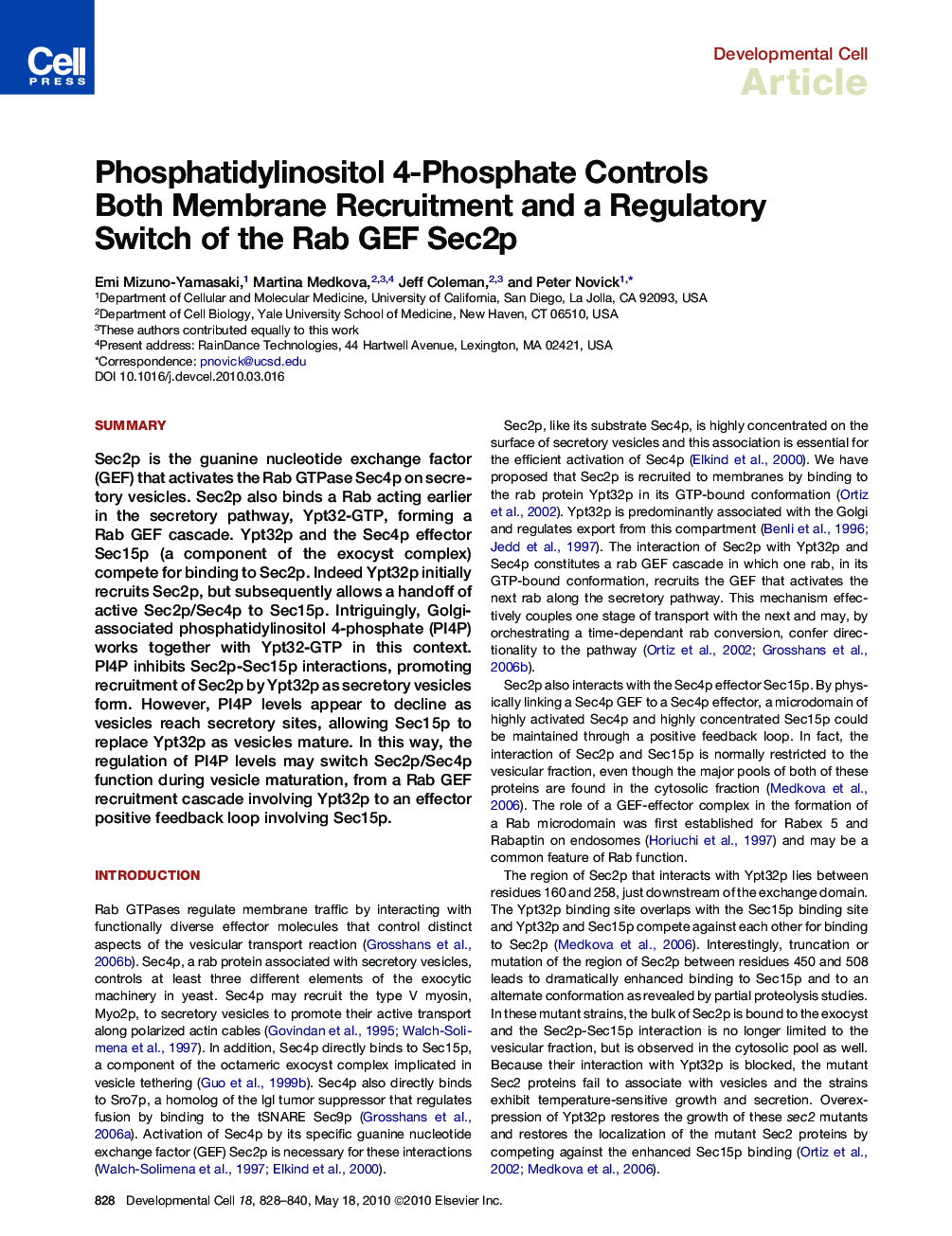| کد مقاله | کد نشریه | سال انتشار | مقاله انگلیسی | نسخه تمام متن |
|---|---|---|---|---|
| 2177133 | 1094624 | 2010 | 13 صفحه PDF | دانلود رایگان |

SummarySec2p is the guanine nucleotide exchange factor (GEF) that activates the Rab GTPase Sec4p on secretory vesicles. Sec2p also binds a Rab acting earlier in the secretory pathway, Ypt32-GTP, forming a Rab GEF cascade. Ypt32p and the Sec4p effector Sec15p (a component of the exocyst complex) compete for binding to Sec2p. Indeed Ypt32p initially recruits Sec2p, but subsequently allows a handoff of active Sec2p/Sec4p to Sec15p. Intriguingly, Golgi-associated phosphatidylinositol 4-phosphate (PI4P) works together with Ypt32-GTP in this context. PI4P inhibits Sec2p-Sec15p interactions, promoting recruitment of Sec2p by Ypt32p as secretory vesicles form. However, PI4P levels appear to decline as vesicles reach secretory sites, allowing Sec15p to replace Ypt32p as vesicles mature. In this way, the regulation of PI4P levels may switch Sec2p/Sec4p function during vesicle maturation, from a Rab GEF recruitment cascade involving Ypt32p to an effector positive feedback loop involving Sec15p.
Graphical AbstractFigure optionsDownload high-quality image (141 K)Download as PowerPoint slideHighlights
► Rab GEF Sec2 binds Golgi-derived phosphatidylinositol 4-phosphate (PI4P)
► PI4P inhibits Sec2 binding to the exocyst, freeing Sec2 to bind Ypt32
► PI4P thus acts in parallel with Ypt32 in Sec2 recruitment
► As [PI4P] declines, Sec2 engages in a positive feedback loop with the exocyst
Journal: - Volume 18, Issue 5, 18 May 2010, Pages 828–840